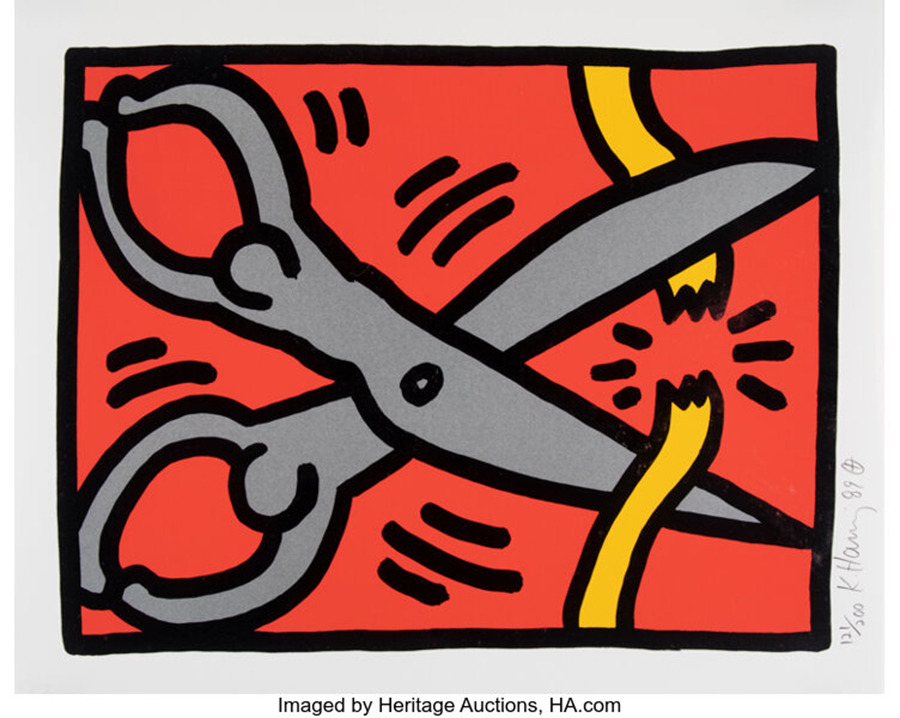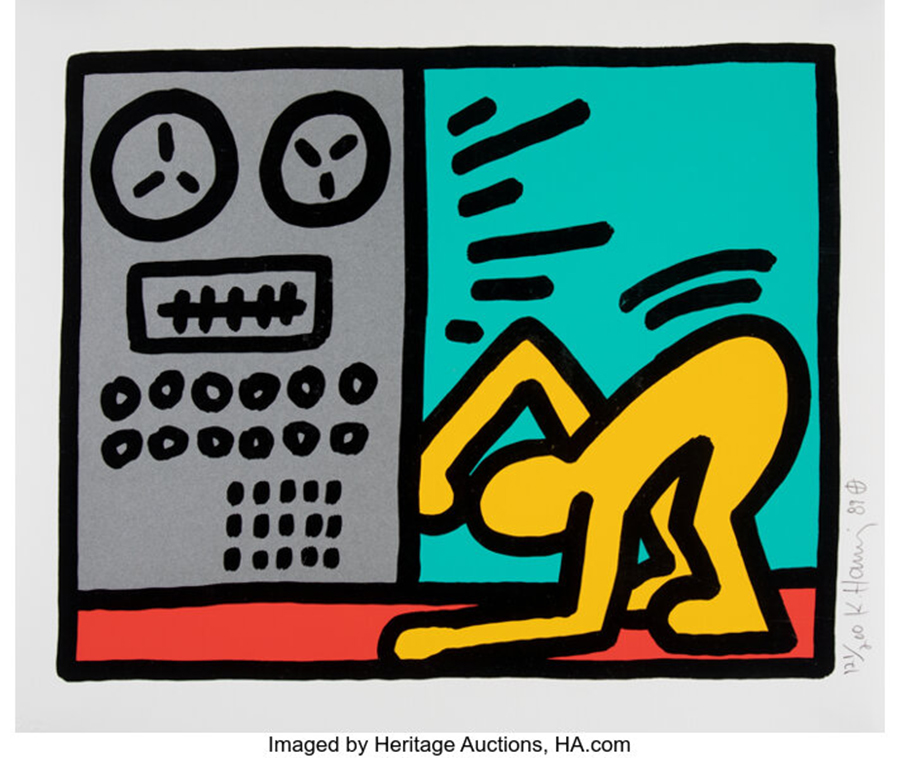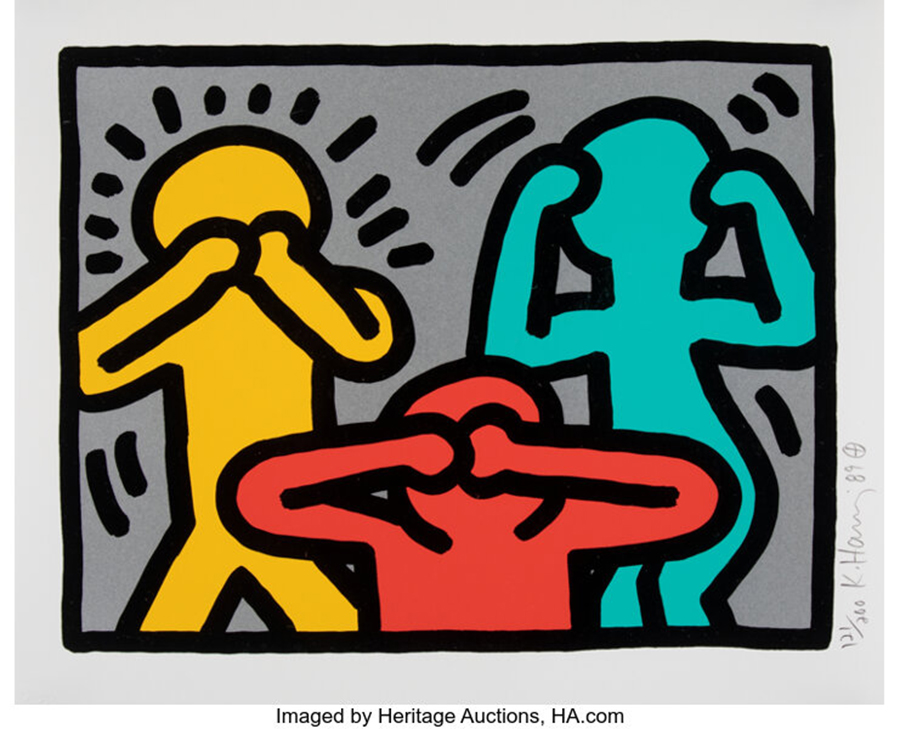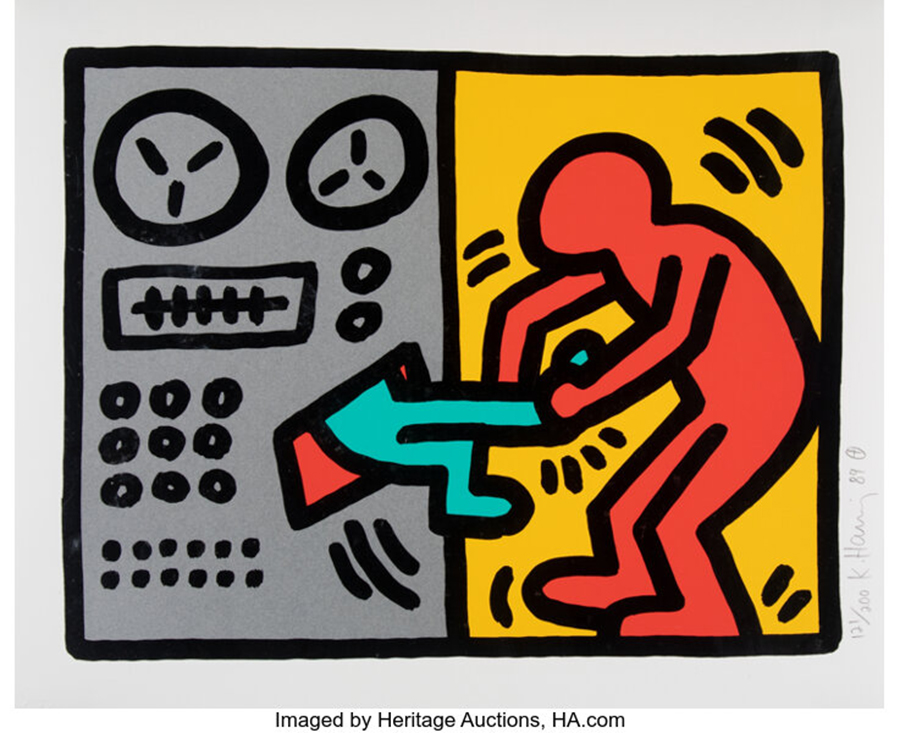THE VISIONARY ARTIST AND POP SHOP FOUNDER WAS AHEAD OF HIS TIME IN MORE WAYS THAN ONE
By Christina Rees
Enlarge
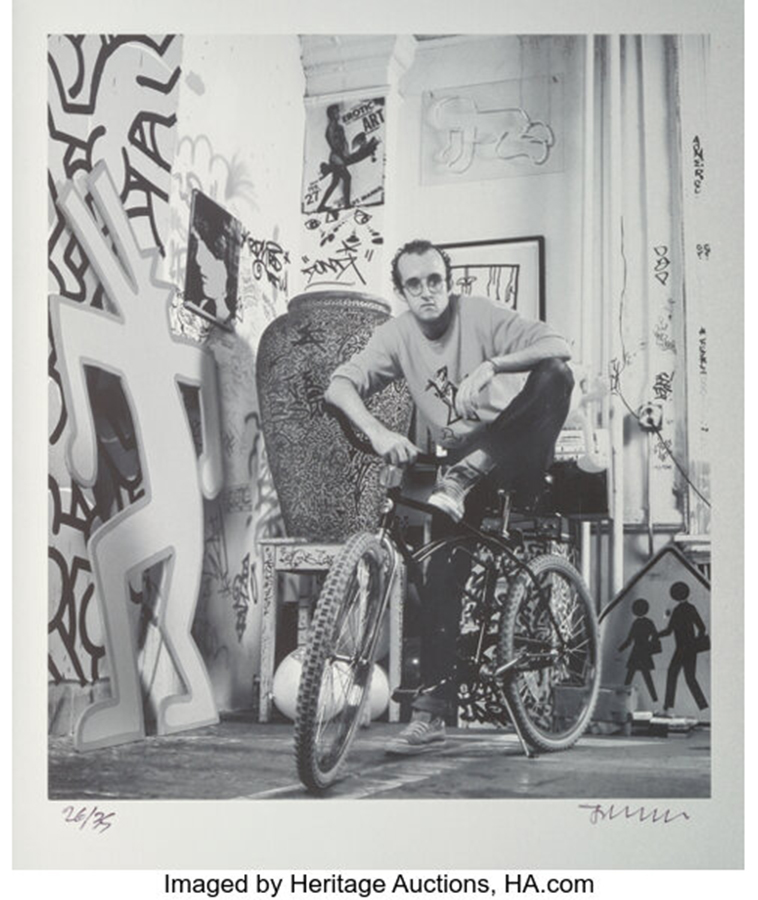
There are places and eras that changed the trajectory of modern culture, and New York City has produced some cycles that are hard to top. It’s difficult to describe just how different downtown Manhattan looked and felt in the 1980s compared to the last couple of decades. Movies and documentaries shot on location back then can give you a taste of it, with cult fave Downtown 81 – which tracks then-burgeoning artist Jean-Michel Basquiat through some scrappy days – being a solid reference point, given that the film chronicles and acts as a harbinger of how explosively creative ’80s NYC was. Much of Manhattan south of Houston Street looked like bombed-out war zones (on film and in person), but the people making moves there – the artists and gallerists, writers, filmmakers, musicians and more – drastically changed how culture was produced and consumed from that point forward.
PRINTS & MULTIPLES SIGNATURE® AUCTION 8120
April 18, 2023
Online: HA.com/8120a
INQUIRIES
Rebecca Van Norman
214.409.1772
RebeccaV@HA.com
A handful of names stand out as the visionaries who sprung from this camp, and Keith Haring was certainly near the top of that list. Four years before his death at age 31 from complications due to AIDS, he solidified his legacy and his ethos by opening a downtown store dedicated to selling his editioned works to the public. In 1986, the Pop Shop opened at 292 Lafayette Street in SoHo, and it immediately shifted the artworld’s view of how artists’ multiples could redefine collectors’ and fans’ appetites and the market in general.
It was a small space (every inch of it covered in Haring’s distinctive linework) with a massive impact. The Pop Shop exemplified Haring’s altruism and grace in a way that defined and defied the era’s post-punk attitude. Haring kicked off his career with simple subway drawings – hyper-local art for all – but when his work hit the galleries and was stolen off subway and city walls, he knew it had gotten too precious for his own taste. Haring was so ahead of his time – in spirit, art and action – that when he opened the Pop Shop, he single-handedly and practically overnight dragged us all into the future.
“Here’s the philosophy behind the Pop Shop,” Haring explained. “I wanted to continue this same sort of communication as with the subway drawings. I wanted to attract the same wide range of people, and I wanted it to be a place where, yes, not only collectors could come, but also kids from the Bronx. The main point was that we didn’t want to produce things that would cheapen the art. In other words, this was still an art statement.”
There’s no question of how and why Haring’s work – witty, muscular, emotive – is still some of the most beloved and recognizable today. In his short life, he was practically the Platonic ideal of the contemporary artist: trailblazing, porous, defiant, inclusive, prolific and ever in touch with his original audience. On April 18, in its Prints & Multiples Signature® Auction, Heritage Auctions will offer a complete set of limited-edition Pop Shop lithographs Haring produced in 1989, titled Pop Shop III. It was the third set of four he created for the shop that year.
The work is Haring at his sharpest and most prophetic. The four panels tell a loose and rangy (and comic) tale of humans struggling to control their machine. A giant pair of scissors cuts the cord to an all-important computer. People fret. A person gets sucked up into the machine in an attempt to fix it, while another helps and panics.
Does this sound like 2023? Exceptional artists have exceptional antennae. Thirty-four years ago, Haring predicted our fraught relationship with the digital revolution. He knew where we were headed in more ways than one.
 CHRISTINA REES is a staff writer at Intelligent Collector.
CHRISTINA REES is a staff writer at Intelligent Collector.



